Carmakers that have been in India for 250 months
We look at car companies that have been around in India even longer than we have. The list is much shorter than we thought.
Published On Aug 01, 2020 07:00:00 AM
37,428 Views
Follow us onOut of the 31 automotive manufacturers operating in India today, only eight car brands have been around for more than 250 months, and that’s indicative of a couple of things. First, the Indian auto industry is relatively young, with most brands not more than 10-15 years old – or, given the theme of this issue, should we say not more than 200 months old?
Second, the number of auto brands is still relatively small compared to other established markets, which means the entry barriers to the Indian market are very high. And lastly, you need serious staying power in India because let alone making profits – which in our ultra-low margin market is non-existent for many – even after 250 months, just survival is a challenge.
If they knew what a tough market India would evolve into, some of these global companies would not have taken the plunge into what turned out to be an ocean of red ink. But after digging their wheels into the sub-continent, the companies, hanging in there by a toe-hold after 250 months, still live in hope that all the billions they’ve thrown (and blown) away will one day yield returns. So let’s take a look at the companies that have joined us on this 250-month (and more) ride and examine how they’ve fared.
Maruti Suzuki Ltd (established 1981 as Maruti Udyog Ltd )
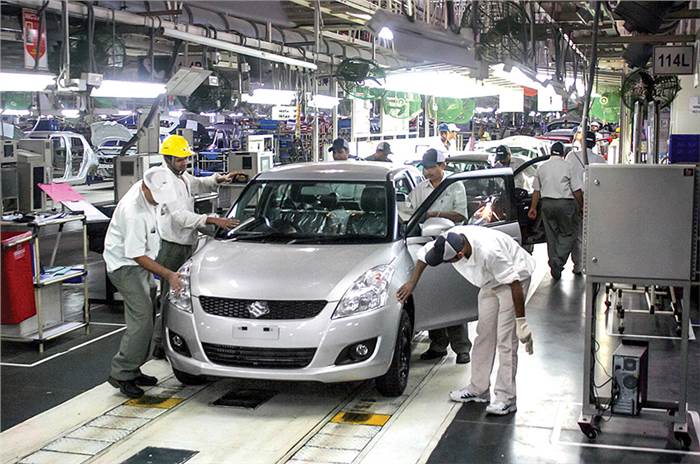
In September 1999, Maruti Udyog Ltd was still the market leader, a position it hasn’t relinquished since the birth of the company. But, 250 months ago, the Japanese automaker had just emerged from the toughest period in its history. After a bitter and prolonged fight with the Government of India (Suzuki’s equal joint venture partner) for control of the company, Suzuki managed to take charge soon after the NDA government came to power in 1998.
However, the three-year-long impasse between the warring partners resulted in a freeze on new product development and capacity expansion. With no fresh products to fight aggressive Korean newcomers like Hyundai and Daewoo, Maruti, used to its monopolistic position, faced serious competition for the first time. To make matters worse, it faced a strike in 2000, which crippled production for three months. Market share dropped to an all-time low of under 40 percent in 2001, and it was only in 2002, when Suzuki was firmly in the driver’s seat, that fresh products started flowing. And it couldn’t have got any fresher than the Swift, which launched in 2005.
The Swift was an inflection point for Maruti and it transformed the image of the company that was known until then for bringing cheap, but outdated and dull products. It was the first Maruti everyone wanted to have, and three generations on, its popularity remains undiminished.
The Swift and its derivatives, like the Dzire and Ertiga, built off the same platform, were a cash cow for Maruti. They sold in millions and made thumping profits for the company. Maruti also brilliantly milked the diesel wave that swept the market, with the Fiat-sourced 1.3 engine; and this too added handsomely to the company’s coffers.
Fast, agile and with an ear to the ground, Maruti is usually the first to spot new trends and open new segments. The AMT gearbox and compact MPVs are but a case in point. Yes, the company got it wrong by messing up its in-house diesel strategy and being very late to the SUV party, but these lapses notwithstanding, 250 months on, its leadership in India, especially in a post-COVID-19 scenario, stands unchallenged.
Fiat Chrysler Automobiles (established 1997 as Fiat Automobiles India Pvt Ltd .)
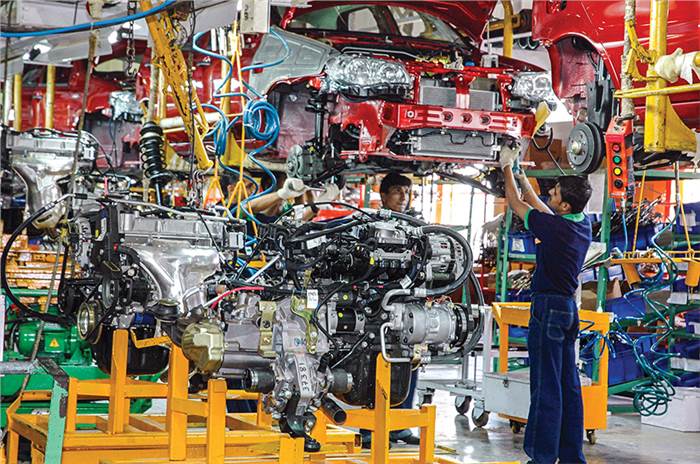
Few brands have evoked as much emotion as Fiat which is still a household name in India. It’s a brand with a tumultuous history, starting from 1951 when the founders of Premier Auto started assembling the 500 under license well before the era of the legendary Padmini. It was only in 1997, after the liberalisation of the auto industry that Fiat came to India as a company to cash in on what the legacy the Padmini had built. The potential was clearly there, as seen by the early success of models like the Uno, Palio and Linea.

However, poor Indian management, an even worse dealer network and the Turin HQ’s overall lack of focus and commitment to the Indian market is what finally doomed Fiat. The brand is now history but the company still exists in a new avatar as a part of the FCA Group, building Jeeps.
Ford India (established as Mahindra-Ford in 1994)
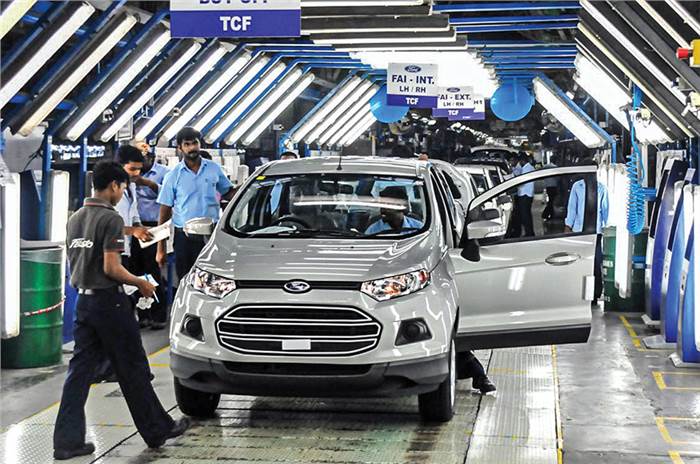
Ford started out in India as a joint venture with Mahindra & Mahindra in 1995, and after 24 years (or 288 months), it has come a full circle by collaborating once again with its former partner. The years in between saw Ford try to hack it on its own in the tough Indian market before it finally gave up going solo and threw in its lot with Mahindra in 2019, for the second time.
Ford India’s history and that of this magazine are entwined because the Ford Ikon, the maiden product to come out of the American carmaker’s wholly owned Indian subsidiary, was first revealed on the cover of Autocar India’s inaugural issue in September 1999, exactly 250 months ago.
The feisty Ikon got off to a great start, appealing to customers looking for something more exciting than an Esteem or Accent. Ford, however, threw its advantage away when it committed the same mistakes as other global OEMs. With the Indian market proving a lot tougher than anticipated, Ford took its foot off the pedal.
New product launches were few and far between, and the company became essentially a one-trick pony – its survival depending on just one model. After the Ikon, the Fiesta came in 2005 to hold the baton but arriving after a seven-year gap, it couldn’t emulate the Ikon’s success. The practical and affordable Figo that came in 2010 was a turning point and it made Ford more of a mainstream brand. The Figo’s popularity gave Ford newfound confidence to make India an important hub for its ‘B-cars.’ The gamechanging EcoSport, and the next-gen Figo and Aspire compact sedans placed the carmaker in crucial, high-growth segments. Ford was back in the race. In 2018, the company clocked its highest monthly sales, but sustaining the momentum was easier said than done. Rivals soon charged into the same segments, thus intensifying competition, and put Ford’s bestsellers like the EcoSport under huge pressure. Ford should have upped the ante and invested in refreshing its key models, but by then, the world had changed.
The automotive industry was facing its biggest disruption, with electric vehicles, shared mobility and connected tech coming of age. This has forced automakers to invest eye-watering amounts to adapt to a new ecosystem just to secure their future. For a cash-strapped Ford, this meant it could not keep throwing money into a market like India which, after 25 years, continues to be a bottomless pit with no signs of profitability. But rather than packing up and going back home, like GM did, Ford has chosen to share the costs, risks (and rewards) with Mahindra, and will jointly develop a slew of new products. This is a marriage that could finally work.
Honda Cars India (established as Honda Siel India Ltd in 1997)

The first-gen City laid the foundation for Honda in India and subsequent generations of the sedan formed the bedrock of the company. 250 months ago, the first-gen City was already the bestseller in its segment and so strong was its appeal, that Honda could get away with pricing it higher than the Mitsubishi Lancer, which is otherwise the more expensive of the two in other countries.
The City was an ‘Asian’ car tailored for this part of the world but soaked in Honda DNA, and that is what endeared it to its customers. The sedan was thrilling to drive, super-efficient and utterly reliable. It set the tone for the Honda brand, which the company capitalised on by going further upmarket. In 2001, the Accord was launched, followed by the CR-V in 2003. The Civic, which was a generation ahead anything else when it came in 2006, revolutionised the executive sedan segment. In July 2006, the month it was launched, Honda sold 2,441 Civics, a figure no other exec sedan has come close to matching. Honda hadn’t put a foot wrong in the Indian market, until its drastic change of strategy – one that traded class for mass.
The Civic and Accord were discontinued in 2012 and 2013, respectively, while the company focused on developing a range of cars below the City. But to be competitive in this space, Honda had to compete with Maruti, and to compete with Maruti, Honda had to do something it had never really done before – make cut-price cars.
That’s exactly what the Amaze, Brio and Mobilio felt like. They were built on a platform that prioritised cost over quality, diluting the Honda DNA in the process. Yes, the petrol engines were brilliant and the cars were reliable and efficient, but they lacked the engineering sophistication Hondas are known for. The carmaker also misjudged the diesel market and launched its in-house 1.5-litre unit just when the demand for diesel began falling off its peak.
The City is still the backbone of the company, bolstered by other products like the Amaze and WR-V. However, the ease with which Honda could pull customers into showrooms and make them buy its cars at a premium is long gone. 250 months on, the brand has lost its aura and it will take more than the next-gen City to bring back its old magic.
Mercedes-Benz India (Established as Mercedes-Benz India Ltd in 1994)
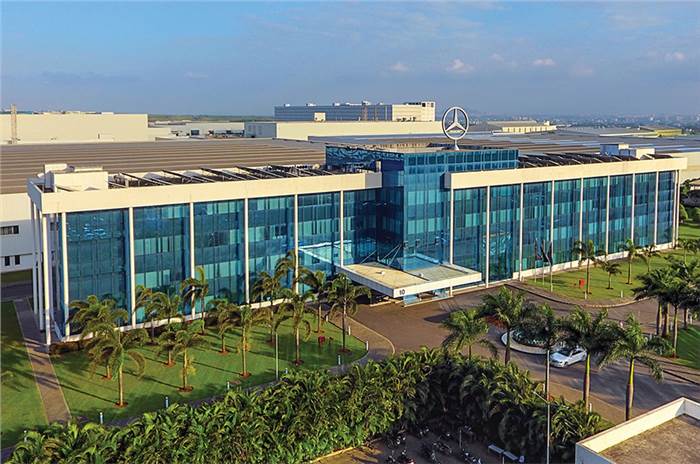
Starting off on the wrong foot is best exemplified by Mercedes-Benz India, whose maiden product was a big flop. The German luxury carmaker chose to launch the W124 E-class in India exactly at the time it was being replaced globally by the next-gen W210. This was Mercedes taking the Indian market for granted by expecting the luxury car buyer to buy an outdated model. The backlash was tremendous, with proud, well-travelled Indians spurning what they saw as a hand-me-down model from Germany. Mercedes quickly course-corrected by ditching the W124 for the latest W210 after just 2 years, after which, it never made the same mistake again. Since then, the carmaker has always brought its latest models not long after their international debuts.
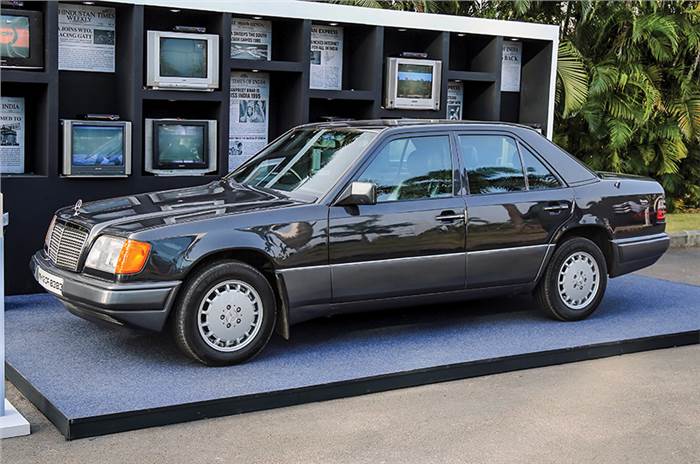
Mercedes slowly added to its India range with the S-class and C-class in 2000 and 2001, respectively. For almost a decade, it enjoyed a complete monopoly at the topmost end of the luxury market, and this certainly made the company complacent.
So when BMW swooped in, Mercedes was certainly caught napping, and within just a year, the Bavarian rival snatched the lead to become the No 1 luxury brand in India. Before, Mercedes could recover, Audi, too, came to India, flush with parent company Volkswagen Group’s funds and drove straight into the hearts of luxury buyers to take the No 1 position away from BMW. All Mercedes could do was watch its rivals chomp into its once-100 percent market share. But clearly, Stuttgart wasn’t giving up. It sent some of its best executives to turn things around, and that meant several management changes and revamping of the dealer network. More importantly, this was the period when the oldest carmaker in the world was reinventing itself by jumping into new segments and completely revamping existing model lines.
India benefitted from this product renaissance, which included a new range of SUVs and a new compact-car family that addressed a much wider customer base. This was backed by a massive push in marketing, sales and service to win back lost customers and its lead in the luxury car race in 2015, which it has tightly held on to ever since.
Hyundai Motor India (Established 1996)

Speed, aggression and an unflinching commitment to India best sum-up Hyundai’s innings here. And that commitment can be seen in the models brought to India. No outdated or discontinued hand-me-downs from the mother plant; but only the absolute latest models, some of them introduced in India first before the rest of the world.
Rewinding 250 months, Hyundai’s maiden product, the Santro (its oddball looks notwithstanding) was well-established and chipping away at Maruti’s share. In fact, if there is one company that has given the market leader sleepless nights for the past 250 months, it’s this Korean automaker. But while Hyundai has always put its best foot forward, that foot in the early days wasn’t quite strong enough to stamp out competition.
Early Hyundais, with their toothy grilles, incohesive styling and weak engines, didn’t offer the same value proposition as the better engineered Japanese brands. However, the speed with which Hyundai kept reinventing itself over the past 250 months has made it more technologically advanced than other mass-market brands in India. With cutting-edge diesel and petrol engines, multiple transmission options, the best and latest features, and connected tech, Hyundai’s products are on top of their game. And let’s not forget its design language, which has metamorphosed from immaturely shaped cars to what many consider to be the gold standard in styling. That said, we are not sure that the current move to a more radical design language is the right direction.
Tata Motors (Established as TELCO-Tata Engineering and Locomotive Company in 1945)

Tata Motors, founded as TELCO, started out making locomotives, and then, in 1954, began producing trucks. Sixty years on, it is still the market leader in the CV market.
Tata Motors passenger-car division is much younger, and started in earnest with Ratan Tata’s revolutionary Indica, which was launched eight months before this magazine. The Indica laid the foundation for Tata’s passenger-car business and its success was a springboard for the company to look at bigger things, like the acquisition of Jaguar Land Rover in 2008.
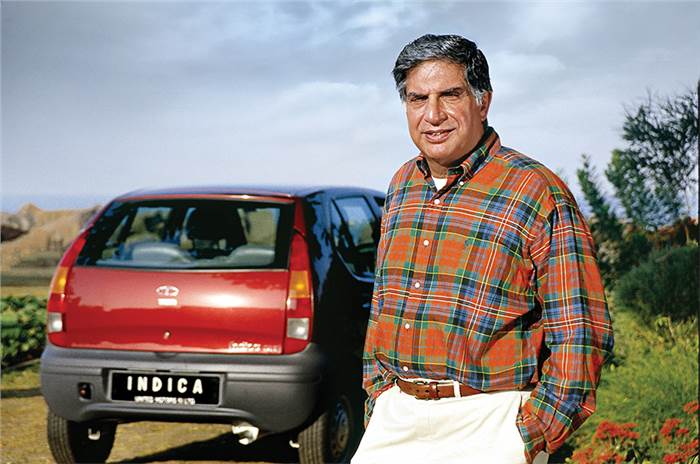
However, it wasn’t an easy start for the Indica because, soon after the launch in January 1999, this fully indigenous hatchback was plagued with quality issues. The company couldn’t cash in on the huge order bank and after the initial euphoria evaporated and reality set in, sales started sliding. What saved the day was the company’s bread-and-butter Sumo, which was still selling in strong numbers.
Back then, the Sumo was the top dog in the Tata range, flying out of showrooms in the absence of serious competition. The Safari too was the ultimate Indian SUV you could buy at the time and it’s amazing how in just a short span, Tata leapfrogged Mahindra with superior products and technology. However, with the arrival of the Indica, Tata Motors lost focus on the UV side of the business and an opportunity to mount a serious challenge to Mahindra’s dominance in the UV market.
The focus was on saving the Indica, and that’s exactly what Tata Motors did, in what is considered to be the biggest turnarounds in the company’s history. In 2001, the Indica V2 version was launched; the company removed all the bugs, to make the car almost trouble-free. Almost. Even today, quality remains a moving target for the company.
The mid-2000s were the golden years for the Indica with the Indigo, Marina and Indigo CS versions being rolled out. There was even a long-wheelbase XL version. With multiple variants and body styles, the cheap-to-buy and even cheaper-to-run Indica found lots of takers, and sales peaked at 15,283 cars in March 2007.
The second-gen Indica (Vista), however, didn’t taste the same success. It didn’t look much different, so it had to compete with the original Indica, which continued to sell side-by-side and couldn’t quite keep up with the competition. In fact, with the new wave of manufacturers entering the market and competition escalating, Tata Motors struggles to keep pace. One of the company’s biggest weaknesses, which still persists, is the slow pace of product development. Big gaps between new model introductions and no proper lifecycle management of existing products made the company’s passenger division very vulnerable.
The only way Tata Motors could compete was on price and this had a direct impact on profitability. Exacerbating the problem was the inefficient structure of Tata Motors which had an impact on costs and productivity. The Nano brought Tata Motors into the global spotlight. It was a beacon for low-cost mobility and its noble intent of getting families off unsafe bikes and into cars captured the imagination of the auto industry and inspired companies like Renault to invent their own ultra-affordable cars like the Kwid. That the Nano was a flop is a different story but it showed the world that Tata Motors could still innovate and be relevant.
The middle of the last decade saw Tata Motors reborn under new top management which scripted a product offensive not seen before in the company’s history. Within a span of five years, the company launched six all-new models, and this began to pay dividends to a point where they actually reached profitability in Q3 2017 after racking losses for five consecutive quarters. In 2018 too, the balance sheet had just a tinge of red and it looked like a revival was on the cards, bolstered by a string of strong, superbly designed products.
However, things have gone pear-shaped for Tata Motors in the last two years. It just hasn’t been able to capitalise on its fresh model range and lost out badly to the competition. Also, it is still behind the curve in product development, with gaps in key areas. A limited choice of powertrains, no connected tech and a dealer network that is still stuck in time have been road blocks. But the biggest hurdle is the brand itself. The Tata badge simply cannot deliver the same premium as other brands, which is possibly the biggest barrier to profitability.
The glory days of Tata Motors, as seen in the past 250 months, are long gone and may never come back.
Mahindra & Mahindra (Established as Mahindra & Mohammed in 1945)
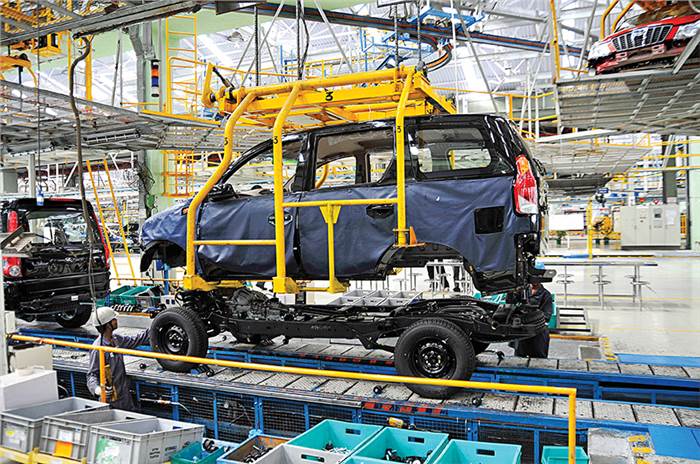
It’s hard to imagine that 250 months ago, Mahindra’s flagship, its most luxurious vehicle was the very utilitarian Armada, the predecessor to the Bolero. It’s even harder to believe that since the Bolero’s launch 239 months ago (July 2000), this hardy but crude SUV is still a big money spinner for the company. What this tells you is that Mahindra is one of the most enduring brands in the market today and its most successful models are decade-old names.
This leads us to the Scorpio that came out in 2002; it singularly transformed Mahindra & Mahindra’s image as a rural UV maker, to a much more sophisticated brand. The completely indigenous Scorpio took the company six long years to develop but it was a quantum leap forward in technology and manufacturing processes for the company. It still sells in relatively decent numbers and is possibly the most iconic model in the carmaker’s stable.
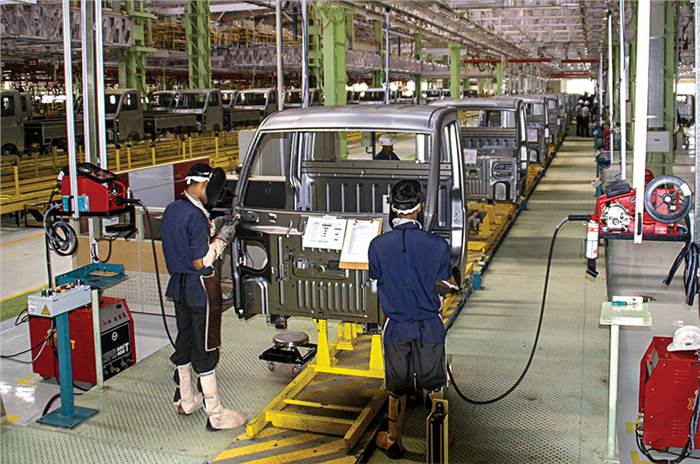
Like Tata Motors, Mahindra’s pace of product development has traditionally been slow. The next big thing, which came almost a decade after the Scorpio, was the XUV500, the company’s first monocoque, which was a big learning experience. It had its fair share of niggles and some poorly engineered bits but the mouth-watering price it was launched at made customers forgive its flaws.
The acquisition of Ssangyong gave the company access to global resources, which Mahindra used cleverly to improve its capabilities in the areas of interiors, powertrains and manufacturing processes. The XUV300, a re-engineered Ssangyong Tivoli, is built to international standards, while the Marazzo too, a product of the company’s North American R&D facility, felt right straight out of the box.
Mahindra’s biggest achievement in the past 250 months is its range of world-class petrol and diesel engines which will give it an advantage in the new BS6 era. But engines alone cannot make a company. Like its domestic rival, Tata Motors, Mahindra does not have the cash of its rival global auto giants to invest heavily in new technology and products, expand its market share and, most importantly, come out of the COVID-19 pandemic in fighting shape. The joint-venture with Ford which opens up lots of international markets could well be the company’s saviour.
Copyright (c) Autocar India. All rights reserved.




Comments
Member Login
Personal Details
No comments yet. Be the first to comment.